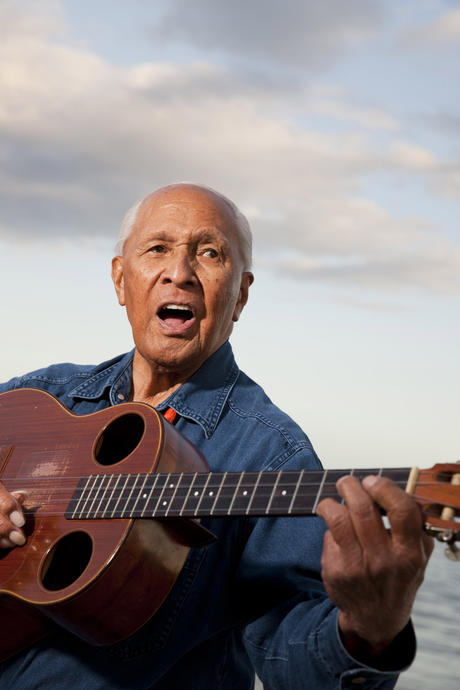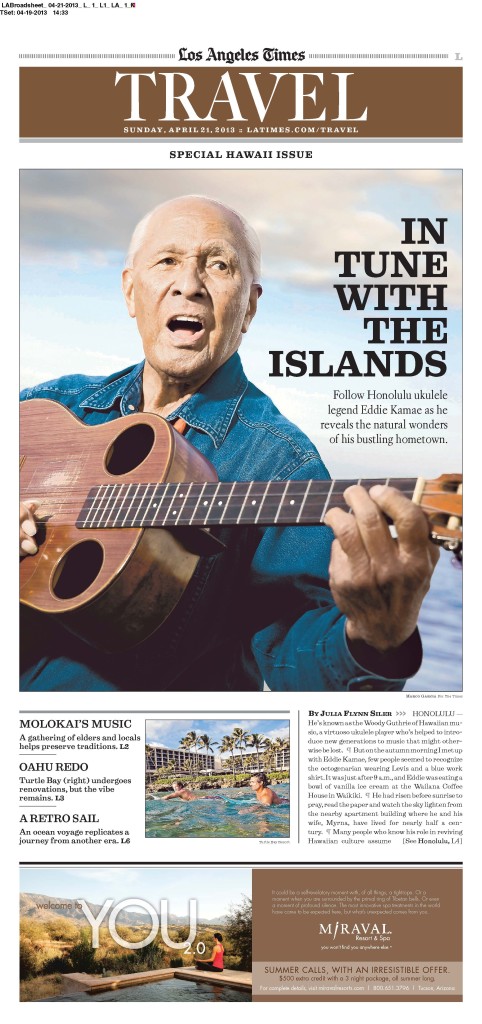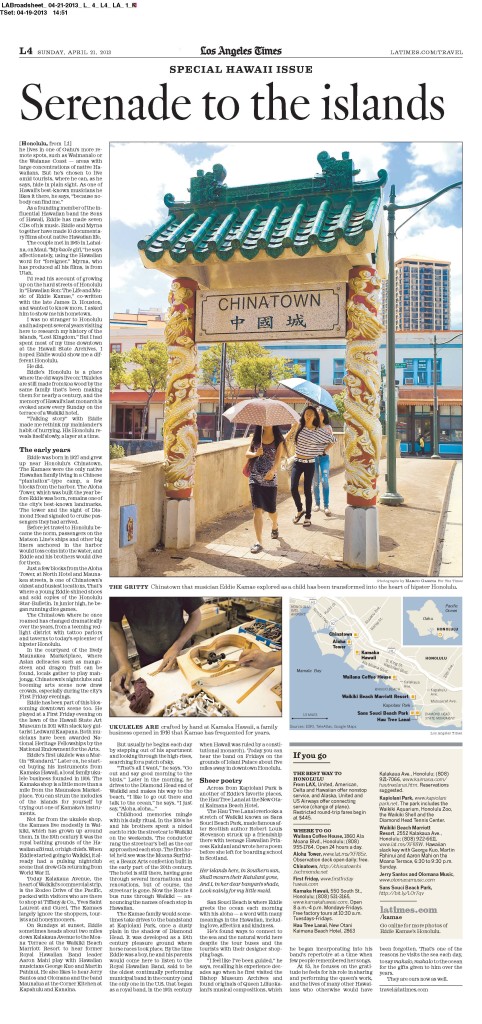
The Los Angeles Times hired me a few weeks ago to spend some time with Hawaii ukulele legend Eddie Kamae as they were to feature him for an upcoming travel piece to Honolulu. As far as Hawaiian legends go, Eddie is on top of the list. He might not be as famous as Don Ho, Bruddah Iz or for that matter Elvis when it comes to that distinct Hawaiian sound, but Eddie, along with band mate Gabby Pahinui, introduced traditional Hawaiian music to the world via the post war tourists flooding the Hawaiian Isles. At the time, traditional Hawaiian music wasn’t played in the tourist districts as most local musicians catered to mainland musical tastes. But once their band The Sons of Hawaii took off, the music found commercial footing which opened the door for Hawaiian music to be heard world wide.
The duality of my job had me creating a portrait of Eddie and then turning around to document Eddie’s Honolulu and the places that helped create the Hawaiian legend. Development and time has erased some of the old town but lots remain such as the Hau Tree Lanai bar at the New Otani Kaimana Beach Hotel where he once played under the massive, century old tree in the 1970’s. Kamaka Ukulele, which made a few of his ‘ukes, still cranks out hand made and custom instruments since 1916, and time seems to have stood still in some areas of Chinatown, Eddie’s childhood stomping grown where he hustled newspapers and fish he caught in Nuuanu Stream.
Making of portrait of him proved to be the most difficult because Eddie isn’t well known to follow directions. He’s a legend. You don’t make him do much of anything as he’ll do what he wants when he wants. But with the prodding of his wife Myrna and their assistant, I got Eddie to the water’s edge at Waikiki Beach at sunset and made a magical shot of Eddie playing a few old standards on his “box.” I knew I had a few minutes to get this done before his mid 80’s patience would wear and I’d have to plan another time to get him in front of my camera.
After our quick photo shoot, we retired to one of his daily spots at the Hilton Hawaiian Village to enjoy a few Kona brews, some pupus and listen to the young musicians play music for the tourists. During our shoot, we had tourist coming around and listening to Eddie play. No one really knew who he was but people knew he was important. Eddie could still command a crowd as he crooned away. A young Japanese girl stood and watched from the beach and probably would never remember she saw a famous ukulele player on her first trip to Hawaii. Eddie doesn’t often play live any more so we got a rare and intimate concert.
Photographically speaking, I must point out a few tricks of the trade that I’ve gotten notice on. Negative space is positive. Shoot loose a photo editor once told me long ago and I took it to heart. If you shoot too close, you don’t give an editor or a page layout person space to work with. I knew to shoot Eddie with lots of space around him, especially head space on my verticals as there was a good chance it would be an opener. I thought about text and headline space and and my in-camera framing worked. Sometimes this approached is ignored as many photographers crop for themselves, not for the end product. You can always crop or shoot tight on your own frames but once you take away negative space, you image can quickly turn negative.
Below are the pdf files from the times. I have my opening shot on top mostly because the pdfs are so washed out. The editor assured me the images were wonderful in the newspaper and on line.

